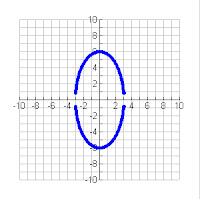y= mx+b
1 degree
0 turns
Domain - x values
Range - y values referred to as f(x)
domain → +∞, range → +∞ (rises on the right)
domain → -∞, range → -∞ (falls on the left)
When m is Negative
domain → -∞, range → +∞ (rises on the left)
domain → +∞, range → -∞ (falls on the right)
Quadratic Equations (parabolic equation)
y=ax²
2 degree
1 turn
(a+b)(c+d)
When a is Positive
When a is Negative







